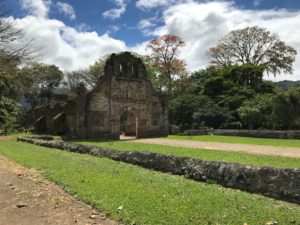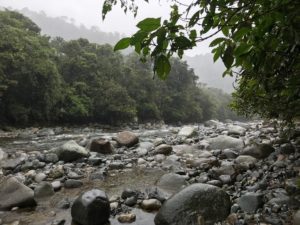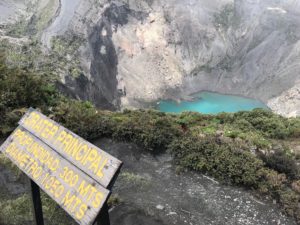Discovering the Magic of Orosi Valley
Exploring Orosi Valley
In the rush to shake off those winter blues with a beach tan, visitors to Costa Rica often flee the Central Valley immediately upon arriving, missing some of the country’s most cherished gems located within a one-hour radius of San José. One such spot is the verdant Orosi Valley in Cartago Province, the country’s original colonial capital. Situated approximately 35 km from San José, the Orosi Valley and principal municipality, Orosi, offer visitors a number of fascinating activities ranging from the cultural to the geothermal – and just about everything in between.
Getting to Orosi
Getting to Orosi is pretty straight forward once you’ve navigated out of San José’s sometimes confusing suburbs. If you have GPS like Google Maps or Waze, use them! You’ll be much happier getting where you want to go in a timely fashion rather than trying to understand how Central American cities are laid out. Take the turnpike (Circunvalación) Route 39 southeast towards San Pedro; at the roundabout Paseo de la Segunda República take the Zapote exit 215 and continue to Curridabat, then follow the signs to Route 2, the Pan American Highway (Interamericana), to Cartago. Veer left onto Route 10 until you reach the center of Paraiso where you’ll take a right onto Route 224 that winds down through small pueblos, tall tropical forests, and fertile squash, sugarcane, coffee and chayote farms before reaching Orosi.
Following the San Carlos River and bordered by the Tapanti National Park to the south, and Turrialba and Irazú volcanoes to the north, the deep Orosi Valley is home to some of the richest soils and finest coffee in the country, as well as a handful of inviting thermal hot springs, making the quaint valley an ideal destination to explore and relax.

Local history
Prior to Spanish Colonial rule, the area was inhabited by the indigenous Huetare, Cabecar and Viceita tribes; Orosi being a local chief and the region’s namesake. Today, the tiny town is home to approximately 4,600 and neighboring pueblos, Ujarras and Cachi. At the heart of town sits the local church, Iglesia de San José de Orosi, which was built in 1743 when the country was still a colony of Spain. Considered a national monument, the church is one of the few colonial structures still in use that was not destroyed or rendered unusable by earthquakes.
Hot Springs:
Nothing beats a rigorous day of rafting or hiking followed by a hot, mineral-rich, soak in a hot-spring pool surrounded by birdsong and tropical mountain breezes. Visitors from all budgets will be happy to know that there’s a spring just for them. In Orosi center you’ll find Los Balnearios, a local favorite for a great price offering basic warm thermal pools and a restaurant. Just out of town towards Cachi, there’s Los Patios, with additional pools. On the upscale, overnight or acquire a day-pass at the all-inclusive Hotel Rio Perlas Spa & Resort, about 10 km from Orosi – the artfully landscaped pools and two-restaurant resort speak romance and relaxation, perfect for the whole family. Visitors also rave about the Chúcaras Hotsprings Estate, which offer a private hot spring experience for groups of five or more. For a fixed price guests can enjoy private use of the pools and expansive grounds as well as a freshly prepared traditional breakfast and lunch.

Tapanti Macizo Cerro de la Muerte National Park
This ecological wonderland is home to Cerro de la Muerte, the highest peak of the Tapani Mountain Range, as well as a diverse array of ecosystems, 260 species of birds, 45 different species of mammals, 20 species of reptiles, and 28 species of amphibians. The park comprises approximately 583 square km and offers visitors the opportunity to explore its depths through a network of hiking trails ranging from easy to challenging. At lower elevations you’ll find a number of roofed kiosks for picnicking – or escaping from a frequent rain shower. Leave early as afternoon rains are common, and check ahead for park visiting hours.
Rafting the Grande de Orosi River and Canopy tour:
Enjoy six kilometers of Class III rapids down the crystalline Grande de Orosi River. The tour includes your raft and experienced guide, safety equipment, fresh fruit and a light lunch with dessert. Numerous tour companies offer rafting and canopy packages so make sure to ask different providers what your options are.
Irazú and Turrialba volcanoes
: Don’t miss out on visiting one, or both, of these geological marvels when visiting Orosi, each comprises a full and memorable day trip through unforgettable countryside, rain forests, and charming pueblos.

Irazú National Park
is approximately 46 km from Orosi and is Costa Rica’s largest active volcano. Head up to the crater’s overlook and you’ll be amazed at the otherworldly vegetation and steamy evidence of past eruptions. Hiking trails and picnic tables abound so enjoy the unique experience.
Volcano Turrialba
(53 km from Orosi) and the surrounding countryside is famous for its dairy products and fresh cheese, as well as numerous recent ash-spewing eruptions resulting in airport and school closures reaching as far away as the San José metropolitan area. Nonetheless, when the mountain’s calm there’s plenty of hiking, horseback riding, and waterfalls to keep you occupied; as well as the famous Guayabo National Monument, these three-thousand year old ruins are considered one of Costa Rica’s most important archaeological finds. Make sure to depart early so you can take in everything these fascinating areas have to offer!

Leave a Reply